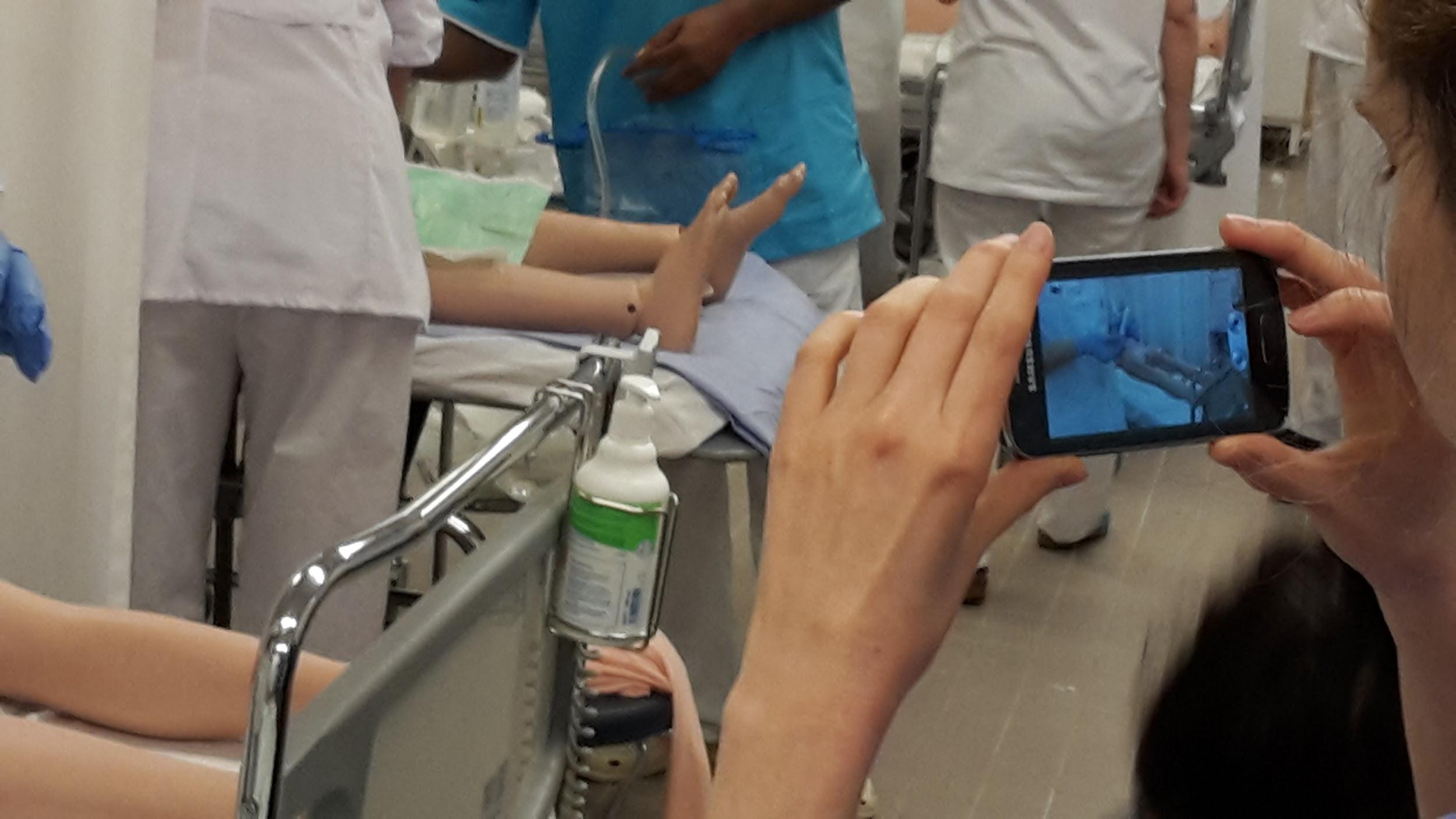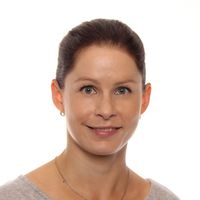Mobile Learning Practices in Healthcare Education: Case of Finland
Main impacts
- Has been adopted as a new form of practice-based learning and assessment at a applied university in Finland
- Enhanced reflective learning
- Increased digital competence of trainers and students
The situation before Layers
Highlights
In healthcare education, nurse students train to become professionals in healthcare by doing laboratory exercises and skills demonstrations that are one part of their training and education. Exercises vary from single operations conducted by single students to complex treatments done in groups. Artificial patients and simulations are examples of the learning tools and technologies that are typically used to practice with for real life situations in hospitals.
Description
Nurse education is a three-year study at the University Applied Sciences including studies at school and training periods in hospitals. The students prepare themselves for practical training periods by conducting more theoretical studies at school consisting of lectures and practical exercises. Skills, knowledge and competence are evaluated in formal exams and as skills demonstrations. Digital technologies are not used.
The content of exercises can be the use of instruments, e.g. a nasogastric tube, performing a single operation, such as cannulation and injections, or more complex and dynamic situations including e.g. CPR or dealing with an anaphylactic shock . Students orient themselves in the subject matter on a theoretical lecture that presents an essential knowledge base for the coming exercise. Exercise is typically conducted with a pair or in a small group so that one student represents a patient while other one or two do the exercise. Alternatively, an artificial skin or artificial patient is used in the exercise. Similar exercises are organized in simulation rooms, where only one group of students does an exercise at a time and another follows them behind a one-way window. Simulations are usually followed by an after action review to talk through what went well and what went poorly. This is done with the desire to make clinicians both better decision makers and improve their abilities to make decisions. Exams, such as CPR exam, are organized as group exercises but with the purpose of student evaluation. Student performance is evaluated by using an observation form and talked through with students afterwards. Exams are not documented, thus the students do not see their own performance in an exam.
Progress in the exercise depends on successful performance that is evaluated by a teacher. In the groups where several exercises are ongoing simultaneously, feedback can be limited or cause delays in students’ progress. In simulation exercises, students receive feedback both from a teacher and other students who observed and evaluated the performance. In exams, an external observer, that is typically a teacher, evaluates the skills demonstration and gives feedback to the students right after the exam.
What Layers did
Highlights
The project changed the current study practices by applying Ach So! mobile learning application to exercises and exams in healthcare education as several pilot studies. In the pilots nurse students documented their study exercises and exams by recording videos, adding annotation to them and sharing the annotated videos to teachers and peers. Advantages of mobile learning practices emerged as new possibilities to document learning processes in exercises and exams, reflect knowledge and experiences on individual and group level, and thus to learn. Applicability to the various learning contexts that benefit from customized videos and controlled sharing was identified in the pilot studies.
Description
Initially, Ach so! was designed and developed for informal learning at work at construction sites where learning happens on the job, in physical and changing environment with co-workers. Learning with Ach so! was built on knowledge creation, knowledge sharing and learning reflection that are relevant in any learning context, also in healthcare education. Therefore, Ach so! was applied as a learning tool to nursing studies to support and enhance study practices in classroom and laboratory exercises and in exams.
Several field pilots were conducted in collaboration with first and third-year nurse students and their teachers. Study content varied with first year exercises e.g. on cannulation and injections to third-year exams and exercises on complex cases on CPR and anaphylaxis. The implementation followed the structure: 1) Introducing Ach so! to students so that they could work with it right away. 2) Students performed their exercise or an exam as they had done it earlier. This time one of the students just documented the performance by shooting a video. 3) The students watched the video in group, discussed about it and highlighted important points by adding written annotations to the video. 4) Annotated videos were categorized and shared to teacher for getting feedback that the teacher gave verbally in the classroom or as annotations that she added to the videos afterwards. 5) The students were interviewed after the pilot for collecting feedback for design, development and enhancing study practices with mobile technologies. Altogether 175 nurse students were interviewed in the pilots.
Even though, the use of the mobile application aimed at enhancing practices, the pilots were conducted in a way that caused a minimal amount of additional work to students and teachers.

Figure 1: Ach so! use in nurse education
The situation after Layers
Highlights
Mobile learning with Ach so! mobile application changed and updated study practices in healthcare education so that the application use as a learning tool continued after the Layers project. Knowledge creation, knowledge sharing and reflection that were initial objectives were fulfilled and justified the follow-up to the pilot studies. In addition to those initial use ideas, Ach so! was identified to be a suitable tool for student evaluation in nurse education.
Description
Healthcare education at University of Applied Sciences was ready for using mobile learning and mobile applications for improving study practices in the beginning of the pilots. Starting the application use was easy and fluent, partly because of user-centered introduction of the application but also because of current study practices that had prepared students to reflect and to create knowledge.
The pilots highlighted an advantage of mobile application to learning and particularly to reflection. The students experienced that with the application they created and gained knowledge that they were not otherwise able to achieve. For example, watching one’s own or group’s performance from videos provided external, third-party perspective on their performance in skills demonstration. The students also pointed out that only the video was not enough for learning but learning was supported by video annotations that forced the students to reflect their experience and learning more elaborated way.
Knowledge sharing was based more on practical reasons than individual learning purposes and learning from others. Videos were shared first and foremost to teacher who used annotated videos for giving feedback to students. Videos were also share among the students who had at least a possibility to use them afterwards for revising and learning.
Ach so! was experienced as a learning tool that enhanced study practices in healthcare education. Application domains were wide, including for instance complex patient cases, extensive simulations, operations, and laboratory exercises. As a learning technology Ach so! was seen as an agile solution that is easily available (bring your own device, BYOD) in the classrooms and that can bring advantages of simulations but more user-friendly in the laboratory and classroom settings. As a follow-up for the Learning Layers pilots, mobile learning and Ach so! are used regularly in healthcare education at the participating University of Applied Sciences and the use has extended from learning practices to student evaluation.
Impact that Layers created
Changed learning practices
In healthcare education, Ach so!
- enhanced possibilities to reflect learning on individual and group levels by watching and annotating videos
- enhanced possibilities to give and receive feedback by adding and editing annotations
- proved to be a suitable tool for student assessment and evaluation
Improved the creation and use of learning resources
- Video documented exercises served as a material for reflection and revision before exams.
- Made the students creators of their learning materials, especially for personal use
Enhanced digital competence
- Introducing the Ach so! mobile learning application to teachers and students increased their competence on digital technologies for learning and teaching.
- Easiness to use the application build positive experiences with technology and changed learning practice.
Links to other sections
- Tools
Contributing Authors
Tamsin Treasure-Jones, Teemu Leinonen, Jana Pejoska, Merja Bauters
Further Reading
Virnes, M., Purma, J., Bauters, M., and Leinonen, T. (2015). Creating and Sharing Knowledge Through Experiences: A Case Study with Ach so! in Healthcare Education. In Design for Teaching and Learning in a Networked World, pp.642-645. Springer.
